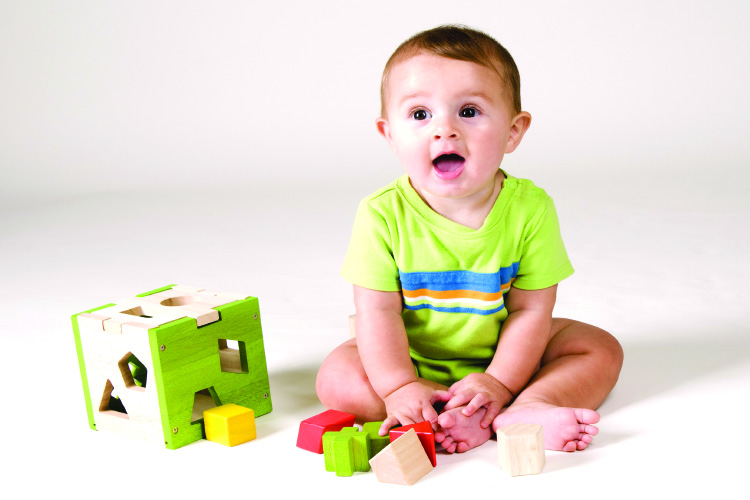As adults we have the responsibility to decide on the toys we buy for children – be they our own or someone else’s. It is even more crucial to think before you purchase – not only for their future but also the earth’s, and invariably ours. You will have better peace of mind when you’re assured of toys that are non-toxic, sustainable and green to the earth. Here’s a scoop on what to look for in alternative, earth-friendly toys.
Table of Contents
Short-Span Fun
Remember, toys are mostly used for a short-time only, and are often thrown or stored away for good once kids outgrow them. Just imagine the number of toys in every child’s household. If that is not bad enough, many of these toys are junk plastic toys that have a short life span themselves. Unknowingly, we also expose our kids to health risks since many of these toys are laced with toxic and made from dangerous materials.
For a growing child, apart from toys, you can consider buying games that will last for a long time in your home, such as puzzles, board games, doll houses, Lego®, etc. Board games can last for some time and will not break as easily as toys. So go for high-quality, long-lasting toys that can be used by several generations of children.
PVC-free Toys
PVC (aka polyvinyl chloride) toys seem to be all around us. Beach toys, teethers, dolls, you name it. PVC produces dioxin and releases toxins into the environment throughout its lifecycle – from the manufacturing stage right up to disposal stage. Worse still, many PVC toys also contain phthalates – chemical compounds that make the PVC plastic more flexible – which is cancer causing and can cause hormonal disruption.
Also, keep a sharp eye on other dangerous chemicals on toys like bisphenol-A, phthalates or lead which are extremely dangerous for young children. (See the short explanation about these materials on next page). Read the labels on packaging carefully that state the toys are free from these materials. If there are no labels, use your smelling test; toxic softeners in plastics can give them that new smell.
Wood is good
If you’re concerned about your little ones chewing on cheap plastic, go for wood toys instead. Look for FSC-certified wood toys that can last for generations. The FSC certification is important as it ensures that the wood you buy has been forested responsibly, allowing for sustainable growth.
Non-battery operated
It is said that USA alone generates close to around 150,000 tons of battery waste a year. No matter what kind of batteries you’re using, it is still bad news as batteries are hard to dispose and will eventually end up in landfills. It’s hard to imagine a modern toy not being battery-operated. Apart from your little ones chewing on batteries, ask yourself whether a battery-powered toy is really necessary, and could your child stay just as entertained with a simpler toy, without all the battery-powered noise. If you absolutely must, look into rechargeable batteries to eliminate waste or solar-powered toys.
Get organic
Look for organic and naturally-dyed cotton, bamboo, and wool for toys such as stuffed animals. There are more pesticides and fertilisers sprayed onto conventional fibres than you might care to know about. The chemicals we use to enhance our crop production often contaminate the soil they grow in and the air and water systems around it. Chemically treated fabric is harmful both to your child and the environment.
Non-toxic paints
Steer clear of petrochemical-based glues and magic markers. Look for water-based paints, coloured pencils, and glues as well as non-toxic, petroleum-free crayons that are made of beeswax or soy wax. The paint on your child’s toys may also have VOCs. For more on VOC (volatile organic compounds), see page 58. There are a slew of new toys that use water-based and low-VOC or no-VOC paints.
Handmade Fun
Many work-at-home mums and single-mothers create handmade toys for a living and you can support them by buying handiworks and crafts. These items are unique as they are not mass produced, and can make a very special gift. Also, add fun by teaching children to think of new toys and crafts of their own from throw-away toy boxes and recycled items. This will not only spark their creativity but help create distinctive items that can’t be found anywhere else.
Second-hand is just as good
Just because a toy has been used once doesn’t mean that it can’t be just as much fun the second time around. Check out eBay, Lelong, Mudah, garage sale, flea market, charity sale, or your local classifieds for perfectly good toys that are not needed by their owners anymore. You can also give a second or third life to your unwanted toys by selling them (and recoup some of the cost) or donating them to charity. Some underprivileged kids may find new ways to enjoy them.
Choose toys from responsible manufactures
Avoid toys that are made in factories where workers are paid a pittance and children are exploited, mostly factories in third world countries. If they can go undetected by authorities, many such companies even go the length of using lead and other harmful chemicals in their toys to make a profit.
Enjoy the outdoors
If you want a truly carbon neutral activity for your kids, there are plenty that Mother Nature can provide. Play tag or hide and seek. Plant a tree or tend a vegetable garden. Teach your children that there is more out there than just computer games and TV! The outdoors provides abundant opportunities to run around, have fun, exercise, and learn about the natural environments around us. Instill in your children to appreciate nature in all its glory. You still remember your childhood days running around with family and friends, don’t you? Now lead the way so that your children will remember theirs.
References:
















